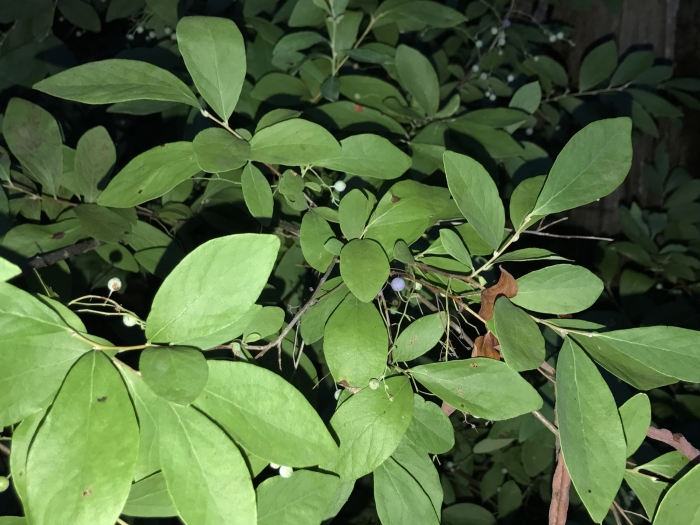Blue Huckleberry
(Gaylussacia frondosa)
Blue Huckleberry (Gaylussacia frondosa)
/
/

Michael Ellis
CC BY 4.0
































Estimated Native Range
Summary
Blue Huckleberry is valued for its wildlife support, providing food for birds and other animals, and its ability to form naturalized colonies makes it suitable for restoration projects and naturalistic plantings. It is also used in gardens for its attractive foliage and sweet, edible berries. In cultivation, it thrives in full sun to partial shade, requires low amounts of water, and prefers acidic, well-drained sandy soils. While generally low-maintenance, it can be susceptible to fungal diseases in humid conditions.CC BY-SA 4.0
Plant Description
- Plant Type: Shrub
- Height: 3-6 feet
- Width: 4-6 feet
- Growth Rate: Slow
- Flower Color: Pink, White
- Flowering Season: Spring
- Leaf Retention: Deciduous
Growth Requirements
- Sun: Full Sun, Part Shade
- Water: Low
- Drainage: Fast
Common Uses
Bee Garden, Bird Garden, Border Plant, Butterfly Garden, Edible*Disclaimer: Easyscape's listed plant edibility is for informational use. Always verify the safety and proper identification of any plant before consumption., Erosion Control, Hummingbird Garden, Low Maintenance, Potted Plant, Salt Tolerant
Natural Habitat
Native to pine barrens, dry sandy woods, and heathlands in the Eastern USA
Other Names
Common Names: Dangleberry, Blue-Tangle
Scientific Names: , Gaylussacia frondosa, Gaylussacia frondosa var. frondosa, Vaccinium frondosum, Vaccinium decamerocarpon, Vaccinium venustum, Vaccinium glaucum, Adnaria frondosa, Decachaena frondosa, Decamerium frondosum
GBIF Accepted Name: Gaylussacia frondosa (L.) Torr. & A.Gray ex Torr.